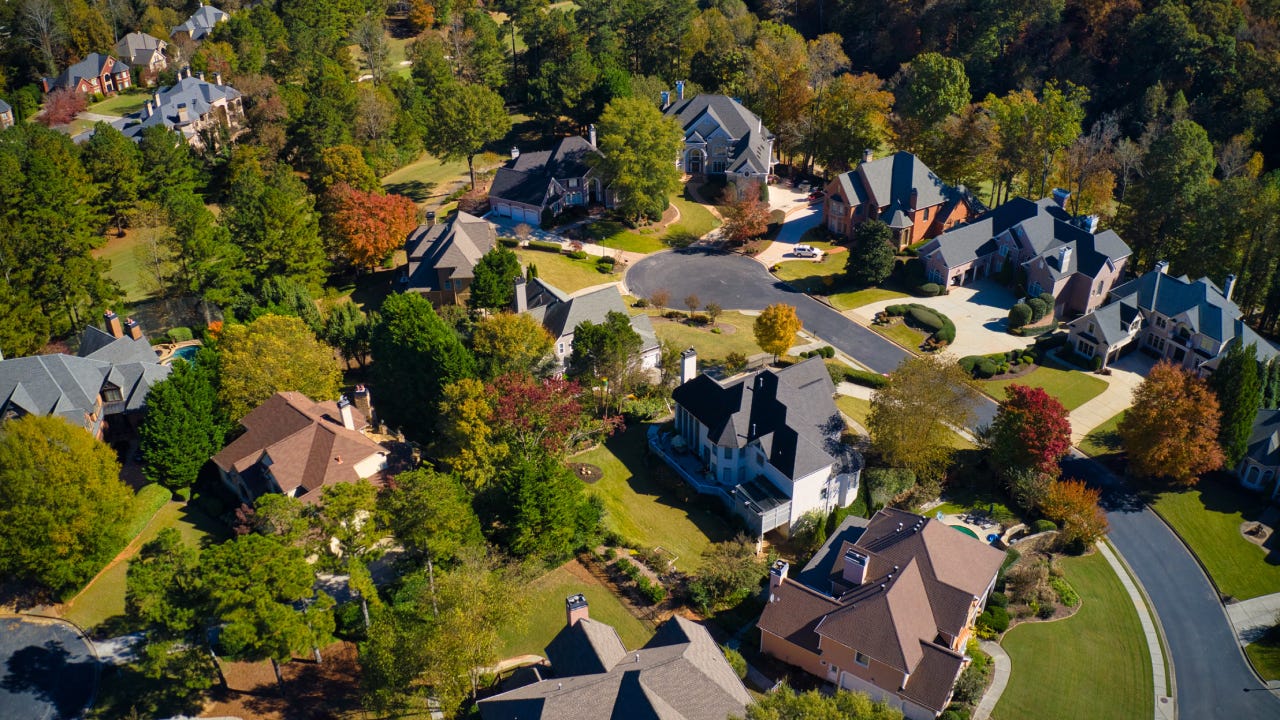Experts: Mortgage rates won’t rise much more — but also won’t go down any time soon

The Bankrate promise
At Bankrate we strive to help you make smarter financial decisions. While we adhere to strict , this post may contain references to products from our partners. Here's an explanation for .
After plummeting to historical lows during the pandemic, mortgage rates have shot up faster than just about anyone anticipated.
As of Oct. 18, Bankrate’s weekly average on a 30-year mortgage rose to 7.99 percent, its loftiest level since August 2000. Bankrate’s overnight average was even higher, hitting 8 percent on Oct. 19.
The sharp rise in rates raises a new question: How much higher could they go?
“We don’t think it’s going to go much higher,” says Priscilla Almodovar, CEO of mortgage giant Fannie Mae. “The question now is, ‘How long are they going to stay this high?’”
Fannie Mae’s latest forecast calls for rates to dip to 7.3 percent by the end of 2023 and to 6.7 percent at the end of 2024. The Mortgage Bankers Association’s outlook, meanwhile, expects 30-year rates will fall to 7.2 percent by the end of this year and to 6.1 percent next year.
Still, mortgage rates are difficult to predict. A year ago, the expectation was that the U.S. economy would fall into recession, and that mortgage rates would follow. Instead, the economy has continued to grow, and mortgage rates have just kept climbing.
Why mortgage rates rose so quickly
When the COVID-19 pandemic hit in 2020, the Federal Reserve slashed rates all the way to zero. The 30-year mortgage rate plunged as low as 2.93 percent in Bankrate’s weekly survey.
It wasn’t until inflation surged that the Fed reversed course. The central bank has raised its key interest rate 12 times throughout 2022 and 2023, driving up mortgage rates along with it.
With inflation still too high, the Fed is seemingly locked into a “higher for longer” phase — instead of boosting rates to cool the economy and then cutting them, the policymaker might stick with elevated rates for a while. Its next meeting concludes on Nov. 1.
“‘Higher for longer’ applies to Fed policy, and we could see it with mortgage rates,” says Mark Fleming, chief economist at title insurer First American.
Another culprit: the mortgage spread, or the gap between 30-year mortgage rates and their closest proxy, 10-year Treasury yields.
While the spread historically is less than 2 percentage points, the gap has been 3 percentage points for much of 2023. If the spread returned to normal levels, that would knock a percentage point off mortgage rates.
Yet, the sharp runup in rates means pension funds, insurance companies and other institutional investors are interested in buying more mortgages. That activity could create what’s known in the market as “liquidity,” which in turn could push spreads back down.
That’s one reason Vishal Garg, CEO of lender Better, believes rates won’t go much higher.
“I think they’ll touch the 8 percent level, and then they’ll come back down,” says Garg.
How high will mortgage rates go?
Currently, the consensus is that rates are unlikely to climb significantly above 8 percent.
However, the continued strength of the U.S. economy has made it less likely that the Federal Reserve will cut rates. Therefore, mortgage rates could stay at these levels for a while, says Dave Liniger, founder of real estate brokerage RE/MAX.
“I don’t believe the Fed has gotten control of inflation yet,” says Liniger. “I would not anticipate interest rates coming back down until election time.”
Mortgage rates near 8 percent are bad news for housing affordability. Borrowing $300,000 for 30 years at 4 percent means a monthly mortgage payment of $1,432. Double that rate to 8 percent, and the payment mushrooms to $2,201.
Despite the rapid increase in mortgage rates, home prices remain near record highs. That’s partly because all those homeowners who obtained low rates during the pandemic don’t want to give them up.
“Practically everybody is locked into 3.5 percent or lower rates right now,” says Fleming.
That’s just one factor in the lack of homes for sale. Another: Builders are ramping up production, but they’re not starting new homes quickly enough to meet demand. In September, housing starts climbed to a seasonally adjusted annual rate of 1.36 million, according to the Commerce Department. That was a 7 percent gain from the revised August estimate of 1.27 million, but 7.2 percent below the September 2022 rate of 1.46 million.
“Regardless of rates, the home price problem is going to be with us until we figure out how to build more housing supply,” says Fleming.
Related Articles



